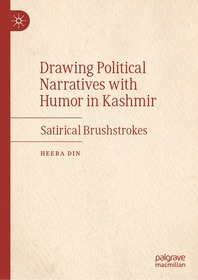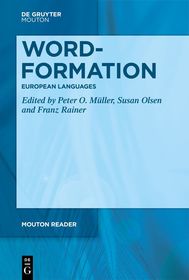
Art and Politics During the Cold War
Poland and the Netherlands
Series: Routledge Research in Art and Politics;
- Publisher's listprice GBP 42.99
-
20 538 Ft (19 560 Ft + 5% VAT)
The price is estimated because at the time of ordering we do not know what conversion rates will apply to HUF / product currency when the book arrives. In case HUF is weaker, the price increases slightly, in case HUF is stronger, the price goes lower slightly.
- Discount 20% (cc. 4 108 Ft off)
- Discounted price 16 430 Ft (15 648 Ft + 5% VAT)
Subcribe now and take benefit of a favourable price.
Subscribe
20 538 Ft

Availability
Estimated delivery time: In stock at the publisher, but not at Prospero's office. Delivery time approx. 3-5 weeks.
Not in stock at Prospero.
Why don't you give exact delivery time?
Delivery time is estimated on our previous experiences. We give estimations only, because we order from outside Hungary, and the delivery time mainly depends on how quickly the publisher supplies the book. Faster or slower deliveries both happen, but we do our best to supply as quickly as possible.
Product details:
- Edition number 1
- Publisher Routledge
- Date of Publication 28 September 2025
- ISBN 9781032454115
- Binding Paperback
- No. of pages156 pages
- Size 246x174 mm
- Weight 290 g
- Language English
- Illustrations 21 Illustrations, black & white; 14 Illustrations, color; 21 Halftones, black & white; 14 Halftones, color 699
Categories
Short description:
Drawing on thousands of historical documents from Polish and Dutch archives, this book explores the Cold War cultural exchange between so-called ‘smaller powers’ of this global conflict, which thus far has been predominately explored from the perspective of the two superpowers or more pivotal countries.
MoreLong description:
Drawing on thousands of historical documents from Polish and Dutch archives, this book explores Cold War cultural exchange between so-called ‘smaller powers’ of this global conflict, which thus far has been predominately explored from the perspective of the two superpowers or more pivotal countries.
By looking at how cultural, artistic and scholarly relations were developed between Poland and the Netherlands, Michał Wenderski sheds new light on the history of the Cultural Cold War that was not always orchestrated solely by its main players. Less pivotal states – for example, Poland and the Netherlands – likewise intentionally created their international cultural policies and shaped their cultural exchange with countries from the other side of the Iron Curtain. This study reconstructs these policies and identifies the varying factors that influenced them – both official and less formal.
The book will be of interest to scholars working in art history, history of the Cold War, post-war European history, international cultural relations, Dutch studies and Polish studies.
MoreTable of Contents:
List of Figures
Acknowledgements
Acronyms and Abbreviations
List of Archives and Archival Collections
Introduction
Chapter 1: Uneasy Beginnings (1947-1956)
“Nederland–Polen” as a Front Organisation of the Communist Authorities in Poland
First attempts at exhibition exchange between Poland and the Netherlands
Exhibiting Polish Folk Art in the Netherlands
Caught Between a Rock and a Hard Place
Commemorating Mickiewicz in the Netherlands and Rembrandt in Poland
Informal diplomacy through personal mobility
Other Forms of International Cultural Exchange and Policy
Chapter 2: Towards the Cultural Agreement (1956-1967)
A gradual shift in the Dutch international cultural policy towards Poland
Is it sheer incompetence, or is he maybe a Communist agent?
Polish artistic invasion in the Netherlands
Between Rembrandt and Van Gogh – exhibiting Dutch art in Poland
Other forms of cultural exchange between Poland and the Netherlands
Towards the Cultural Agreement
Chapter 3: Détente, but first the Year of Revolt (1968-1979)
1968 in Poland
The Impact of the 1968 Events on Cultural Relations
Polish Counter Measures
The Delayed Implementation of the Cultural Agreement
Conference on Security and Cooperation in Europe and its impact on Polish-Dutch cultural relations
Chapter 4: The Last Decade (1979-1989)
Bilateral relations before 13 December 1981
The World and The Hague react to the Polish Crisis
Towards Normalisation
Conclusions
References
Annex: Cultural Agreement between the Government of the Polish People's Republic and the Government of the Kingdom of The Netherlands
Index
More







